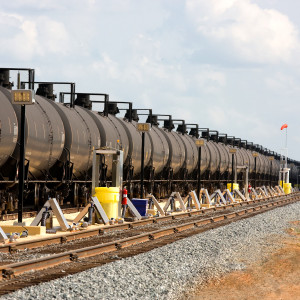After 5 years President Obama remains “undecided” on whether to permit the Keystone XL Pipeline to cross the US-Canada border. During the same 5 years, federal regulators have almost stopped issuing permits for new oil and gas pipelines, forcing US crude oil producers to buy and use more and more trains to move North Dakota (and Canadian) crude oil to Texas refineries. Far less efficient, trains prevent production stoppages — and US crude oil production has reached 8.36 million barrels per day, the high since January, 1988. It continues to rise; we could replace Saudi Arabia as the largest crude oil producer in the world within a decade.
Domestic natural gas production is also booming; the US has surpassed Russia as the world’s largest producer of that premium fuel. Excess gas is being flared (burned off) in Texas and Dakota for lack of pipelines to move it to ready domestic markets. When granted, federal permits for new pipeline routes, and export licenses for liquefied natural gas (LNG), will end the flaring, slash Carbon Dioxide (CO2) emissions and supply US and world markets.
Increased domestic oil and gas supplies have been keys to our slow emergence from the long recession, despite the lack of pipeline permits, and leasing inactivity on federal land (2/3 of all acres west of the Mississippi). The production and economic differences on private or federal lands are reminiscent of prosperity differentials between the USSR and the US, Haiti and the Dominican Republic, North and South Korea – or the Ukraine and Poland. The free market continues to outperform poor government policy, planning and performance.
And despite apocalyptic warnings from Utopians, doom-sayers, and Russia, US greenhouse gas emissions are down. (Real agendas: US groups reflect green-fuel pipedreams; Russia knows their Eastern Europe gas monopoly/regional power will fade as US LNG exports come on.) The International Energy Agency’s World Energy Outlook 2012 said the US would likely be the only nation to meet Kyoto CO2 reduction goal for 2017 (depending upon policy). Now Stevemaley.com cites US Energy Information Administration data and graphics showing that despite government policy, the US met the Kyoto goal in 2012, when US CO2 emissions dropped below 1995 levels!
Oil and gas-haters say they only aim to limit carbon dioxide emissions; they argue that the US met the Kyoto goal due to the Great Recession (which continues after 5½ years of Obama Administration policy). They’re partly right; the Administration deserves all the credit for our grindingly slow recovery and the US rank (#7) in job creation among G-7 nations. New energy supply helped the US attain its Kyoto goal, created jobs and spurred the economy.
The Kyoto goal was met due to rapidly expanding natural gas production and use – due to fracking. Only 10 years ago, 53% of US electricity was generated by coal-fired plants; natural gas supply and economics drove power plants to convert to gas. Coal-generation now is 40% and dropping. Yet according to an EPA official, the new regs (withheld until after the last election) aim to drive coal-fired plants out of business. They will slam the economy and slow the recovery, though gas is replacing coal without any such economic damage.
The Administration must try cost-effective measures rather than regulatory body-blows. A 2013 UN study found that “Black Carbon” is twice as bad for Climate Change as previously thought, and can be cleaned up cheaply and to greater effect. EPA should take that approach.
That was done 25 years ago. One company conceived, created and paid for an emissions cleanup that led to major changes in California and Federal environmental rules, cleaned Los Angeles air for about $0.11 on the dollar (compared to the proposed regulatory fix) and earned a White House award for Environmental Initiative and Excellence. Everyone benefited.
Initiative, technology and energy supply can help restore the US economy and provide the needed decades to develop adequate new energy sources. We need individual, political and corporate leadership to work for those ends, rather than continuing the illogical deadlocks that stymie the nation. Who shall we look to so that everyone benefits?

